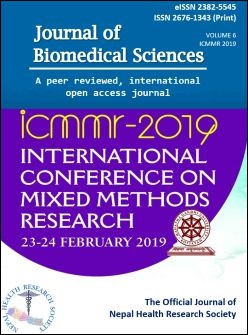Quality of life of children with cerebral palsy living in Kerala, India
DOI:
https://doi.org/10.3126/jbs.v6i3.26852Keywords:
Children with CP, CPQOL-Child, cultural adaptation, quality of life, translationAbstract
Background: The present study aimed at capturing the quality of life of children with cerebral palsy living in Kerala using the culturally adapted version of an international tool, CPQOL- child.
Materials and methods: Adopting multistage cluster sampling, data from 252 children was collected by telephonic interview coupled with mail survey. Data was analyzed with the help of IBM SPSS 21.0.
Results: The first and the best output of the study was CPQOL-child (Malayalam), the locally adapted version of an international tool valid for use among children with CP living in Kerala. Child’s means of communication, severity of CP, gross motor function, parental wellbeing and family health were found to be the significant determinants of QOL. Parent stress was found to have a significant effect on parent reported QOL scores of children with cerebral palsy (r=-.574, p<.001). Parent’s perceived level of happiness (β=.40, p<.001), being the most significant predictor of the model of overall QOL of children with CP calls for efforts to ensure parental wellbeing as the most effective way to ensure child’s QOL.
Conclusion: Family health (R2=.498) explained about half of the variability in QOL scores of children with CP living in Kerala calls for immediate tailor made interventions for family centered care.
Downloads
Downloads
Published
How to Cite
Issue
Section
License
This license enables reusers to distribute, remix, adapt, and build upon the material in any medium or format, so long as attribution is given to the creator. The license allows for commercial use.




